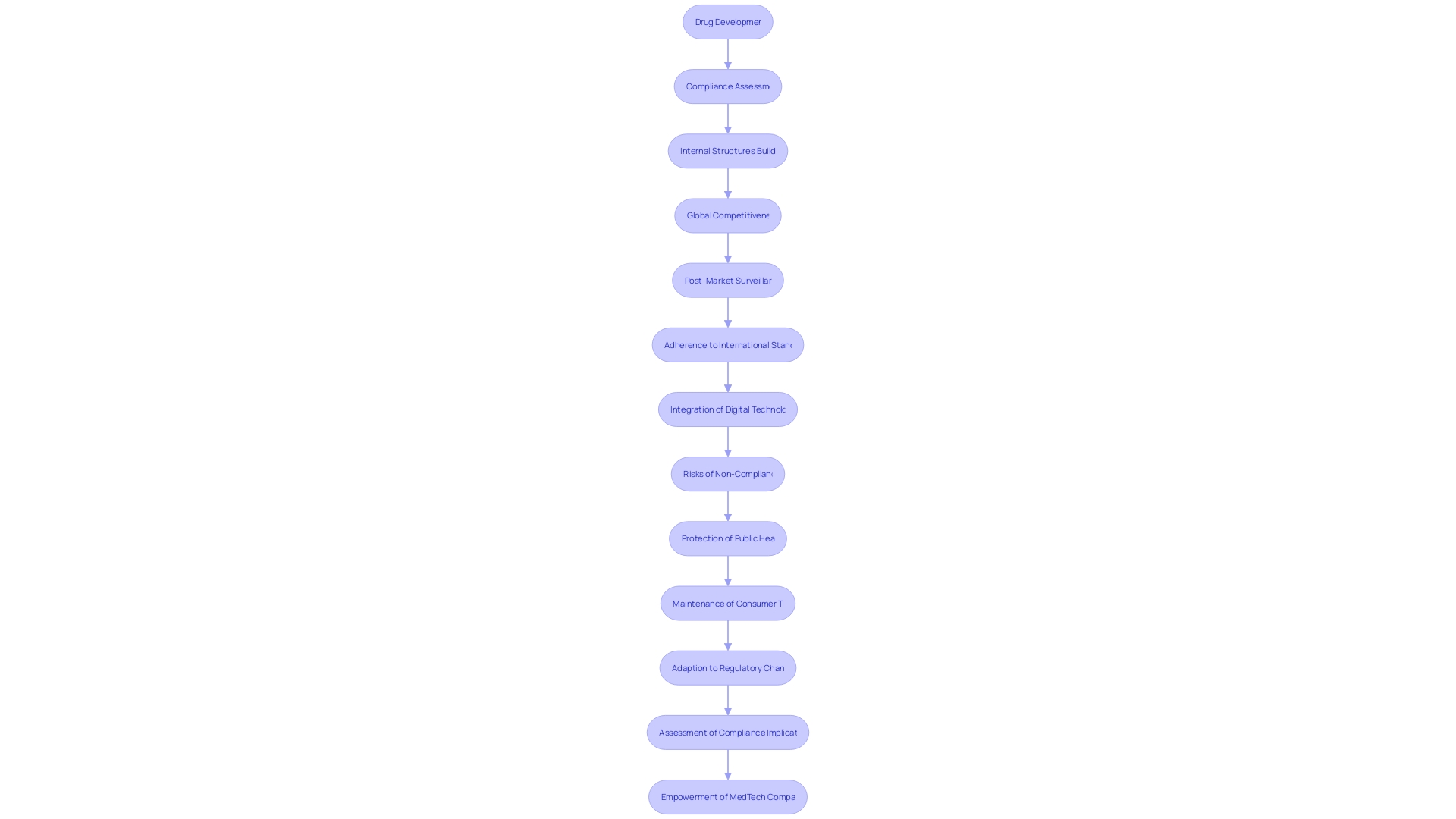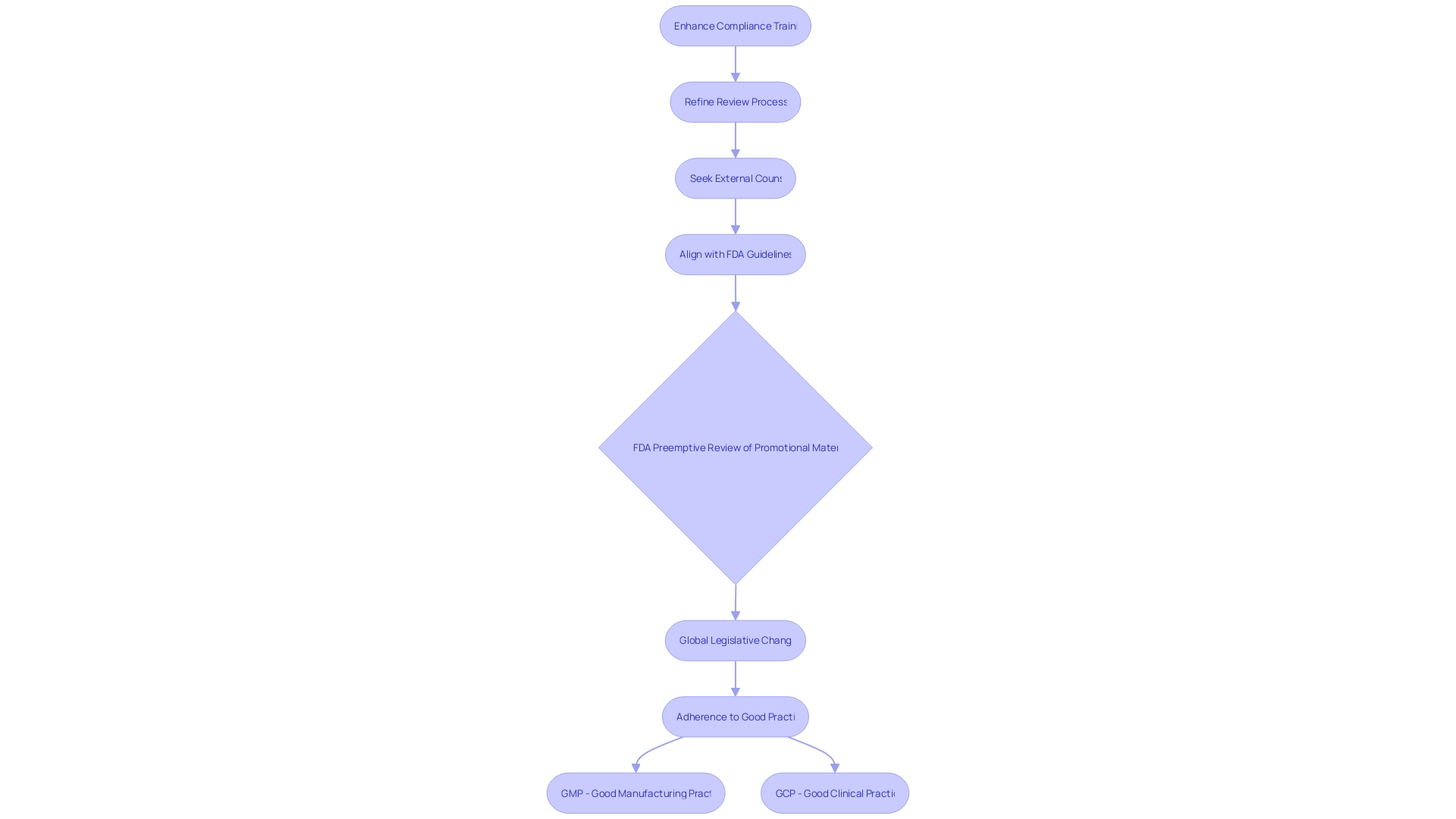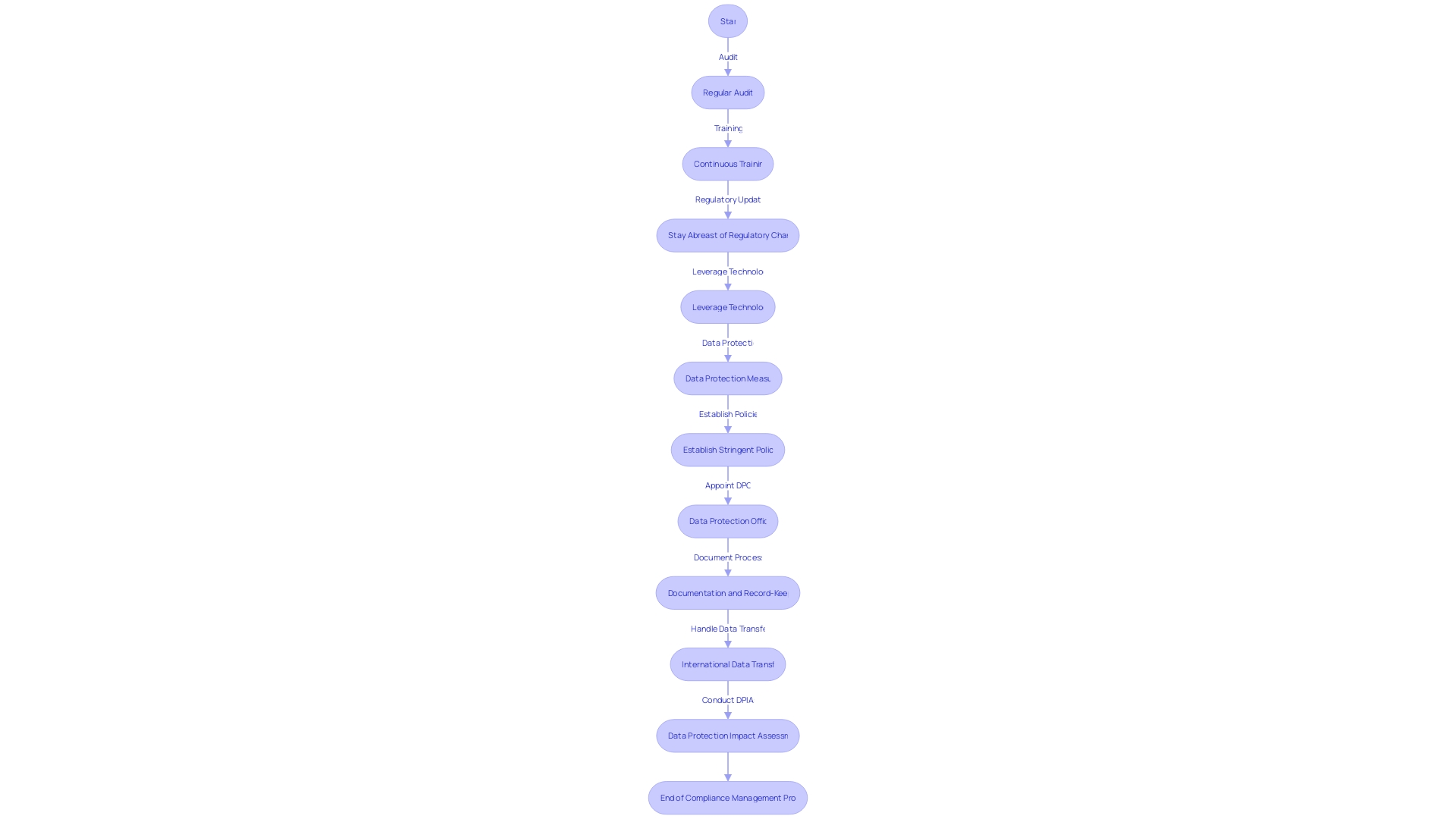Introduction
Regulatory compliance in the pharmaceutical industry is a dynamic and complex process that ensures medications meet stringent safety, quality, and effectiveness standards. This article explores the importance of regulatory compliance in maintaining consumer trust and avoiding legal repercussions.
It also delves into the evolving regulations and their impact on the industry, the challenges faced in compliance management, the role of quality assurance in compliance, and practical solutions for navigating compliance complexities. As the pharmaceutical industry adapts to regulatory evolutions, it is crucial for companies to reassess their strategies and remain viable in an environment where policymakers prioritize lower drug prices. The article provides insights and recommendations for pharmaceutical companies to navigate the intricate landscape of regulatory compliance effectively.
Regulatory Compliance in the Pharmaceutical Industry
Regulatory compliance in the pharmaceutical industry is a dynamic and complex process that ensures medications meet stringent safety, quality, and effectiveness standards. This process is vital, as it underpins the entire lifecycle of a drug, from development through to post-market surveillance.
The stakes are high; recent incidents have highlighted the risks associated with non-compliance. For instance, a pharmacy significantly expanded operations to over 1,000 prescriptions daily, but faced serious allegations of mismanagement and safety lapses, including the distribution of weight-loss medications without prescriptions and lapses in national accreditation.
This case, reported by The Washington Post, underscores the importance of adhering to regulatory standards to maintain consumer trust and avoid legal repercussions. Moreover, the Medicines and Healthcare products Regulatory Agency (MHRA) in the UK brought to light a case where a pharmaceutical company knowingly supplied a substandard product.
This company's disregard for regulations posed a direct risk to patient safety, despite no harm being reported. This serves as a stark reminder of the critical role that compliance plays in protecting public health.
The complexity of the regulatory environment is further compounded by the variation in international standards and the evolving nature of pharmaceutical sciences. With advancements such as AI and machine learning, which can streamline drug efficacy and safety evaluations, the regulatory landscape is continuously shifting. Financial considerations are also pivotal, as adequate funding is required at each stage of drug development, with ethical considerations in clinical trials further influencing the timeline. The integration of digital technology is transforming how pharmaceutical companies engage with consumers and healthcare professionals. Social media and other digital platforms offer new avenues to build trust and drive sales. It's clear that regulatory compliance is not mere red tape; rather, it's a foundational aspect of the pharmaceutical industry that ensures the integrity and reliability of medications reaching the market.

Evolving Regulations and Their Impact
As the pharmaceutical industry navigates a shifting regulatory terrain, the focus on compliance remains paramount. Pharmaceutical companies have proactively fortified their marketing practices, enhancing compliance training, refining review processes, and seeking external counsel to align with FDA guidelines.
This investment in compliance has been fruitful, with a noticeable dip in FDA-issued marketing violation letters, indicating improved adherence to regulations. The FDA's strategy of preemptively reviewing promotional materials prior to drug approvals has been instrumental in this shift.
By guiding companies during development, the FDA mitigates potential infractions, allowing firms to rectify issues before products hit the market, thus reducing violations. Concurrently, global legislative changes are influencing the industry.
The U.S. government's Inflation Reduction Act is set to negotiate prices for 10 selected products, while the EU considers curtailing exclusivity periods for drugs not launched across all member states within a two-year timeframe. Germany and Italy are actively reforming their pharmaceutical regulations to curb drug costs.
In Asia, Japan and China are undertaking similar cost-cutting initiatives. These global movements signify an era of heightened uncertainty for pharmaceutical companies, with a potential squeeze on revenue streams. To maintain compliance, life science organizations must adhere to 'good practices' such as GMP and GCP, which are fundamental in safeguarding product quality and patient health. Amidst these regulatory adjustments, Fiona Maini, a compliance expert, highlights the challenge of aligning swiftly advancing technology with regulatory frameworks, underscoring the need for ongoing dialogue between innovators and regulators. As the industry adapts to these regulatory evolutions, it's crucial for companies to reassess their commercialization strategies and cost structures to remain viable in an environment where policymakers are unwavering in their pursuit of lower drug prices.

Challenges in Compliance Management
The pharmaceutical industry's commitment to compliance is a cornerstone of its integrity and credibility. Indeed, the road to compliance is fraught with challenges, such as the imperative to remain abreast of dynamic regulations and the meticulous management of data integrity.
The importance of robust quality management systems cannot be overstated, as they are the bulwark against the release of substandard products. Moreover, fostering a culture of compliance is not just about adherence to rules; it's about ensuring patient safety and product efficacy.
A cautionary tale is the case of Evotrox Oral Solutions, where falsified stability data led to a significant breach of trust and legal ramifications. The episode underscores the necessity for an unwavering commitment to quality controls and transparent operations within the industry.
This is further emphasized by recent U.S. Department of Justice and Federal Trade Commission guidelines, which scrutinize mergers and acquisitions for anticompetitive practices, directly affecting the pharmaceutical sector. In light of these challenges, industry professionals must prioritize continuous learning, engage in cross-departmental collaboration, and view regulatory hurdles as opportunities for growth.
As the Asia-Pacific region exhibits a higher percentage of compliance staff focused on privacy, it's clear that regional dynamics also play a role in shaping compliance strategies. The stakes are high, as nonadherence to prescribed therapies can lead to dire consequences, including treatment failures and avoidable hospitalizations. To combat this, a nuanced understanding of patient adherence is paramount, alongside investments in compliance monitoring, risk management, and regulatory change management. In summary, the pharmaceutical industry must navigate a complex landscape, where the cost of noncompliance can be measured not just in financial terms but in patient trust and health outcomes. By investing in education, collaboration, and technology, the industry can meet these challenges head-on.

The Role of Quality Assurance in Compliance
In the contemporary business landscape, quality assurance has transcended beyond a mere checkmark for compliance. It's a strategic framework that integrates robust systems and processes to consistently deliver products that not only meet but often exceed regulatory standards.
The linchpin of this framework is the Digital Technology Assessment Checklist (DTAC), which serves as a critical tool for technology assessment, ensuring that products align with the highest standards of quality and safety. For instance, it's not uncommon for developers to be interrogated on the completion of the DTAC form during the initial review stage, a practice that underscores its significance in the validation process.
Moreover, the importance of recognizing a product's medical device status cannot be overstated, with documentation such as the DTAC form, medical device certification, and clinical risk management standards being indispensable in the evaluation of compliance. Quality assurance also involves a collaborative effort, drawing insights from a wide array of stakeholders.
This is exemplified by the stratified sampling approach used in surveys to gather a comprehensive understanding of quality challenges across various departments and seniority levels. Recent news highlights industry movements that reinforce the critical nature of quality assurance.
The Good Distribution Practice Universal Compliance Initiative's (GDP-UCI) appointment of Richard Peck to lead the Audit & Certification work group is a testament to the initiative's dedication to streamline compliance in the pharmaceutical supply chain. Similarly, Beckman Coulter Life Sciences' commitment to helping laboratories navigate the complexities of the updated Annex 1 Regulation reflects the industry's focus on maintaining rigorous quality standards. As businesses navigate the complexities of global compliance, expert guidance becomes invaluable. Quality assurance is not just about adhering to standards; it's about fostering a culture of excellence that ensures customer satisfaction and operational efficiency. Through well-organized training programs and a commitment to creating a culture of compliance, businesses can ensure that quality assurance remains at the forefront of their operations.
Practical Solutions for Navigating Compliance Complexities
To effectively manage the complexities of compliance, it's essential to adopt a strategic and organized approach. The key to success lies in employing a robust compliance management system, which serves as the backbone of your strategy. Regular audits are indispensable; they function as a navigational tool, pinpointing deviations and guiding corrective measures.
Continuous training is crucial, not just as a formal requirement, but as an investment in a culture of compliance that permeates every aspect of operations. Staying abreast of regulatory changes is akin to charting a course in dynamic waters, where understanding the subtleties of each new legislation is vital. Drawing from the experiences of industry leaders like Cisco Umbrella, which streamlined its compliance process using advanced tools, we can see the benefits of leveraging technology in achieving rapid compliance.
The Digital Technology Assessment Checklist (DTAC) is another example, underlining the importance of thorough documentation and clear understanding of medical device status, especially in the context of Software as a Medical Device (SaMD). With the SaMD market projected to grow exponentially, the role of regulatory professionals in navigating this complex landscape becomes even more significant. In the era of digital globalization, data protection and privacy are central to regulatory compliance.
Integrating data encryption, access controls, and transfer agreements is essential in safeguarding sensitive data. Moreover, the establishment of stringent policies and vigilant monitoring of compliance risks are non-negotiable. As the compliance landscape evolves, organizations must adapt by not only implementing point solutions but also by fostering a culture of transparent communication and collective responsibility, as emphasized by experts in the field.

Conclusion
In conclusion, regulatory compliance in the pharmaceutical industry is essential for ensuring medications meet stringent safety, quality, and effectiveness standards. Non-compliance can have severe consequences, impacting patient trust and resulting in legal repercussions.
The evolving regulatory landscape, influenced by global legislative changes and technological advancements, presents ongoing challenges that require adaptability. To navigate these complexities successfully, pharmaceutical companies must prioritize compliance management by staying updated on regulations, managing data integrity, and fostering a culture of compliance focused on patient safety.
Continuous learning, collaboration, and investment in compliance monitoring are key factors. Quality assurance plays a vital role in compliance by going beyond mere checkmarks to consistently deliver products that exceed regulatory standards.
Robust systems and processes like the Digital Technology Assessment Checklist (DTAC) validate product quality and safety. Collaboration with stakeholders and recognizing a product's medical device status are also crucial.
Practical solutions for navigating compliance complexities include adopting strategic approaches through robust compliance management systems, regular audits, continuous training, and staying informed about regulatory changes. Leveraging technology streamlines processes and facilitates rapid adaptability. Data protection measures like encryption, access controls, transfer agreements, and vigilant monitoring of compliance risks are essential. In summary, maintaining regulatory compliance is crucial for upholding patient trust and health outcomes in the pharmaceutical industry. By embracing education, collaboration, technology, and transparent communication, companies can successfully navigate the intricate landscape of regulatory compliance while remaining viable in an environment where policymakers prioritize lower drug prices.
Ensure regulatory compliance for your pharmaceutical business today!





